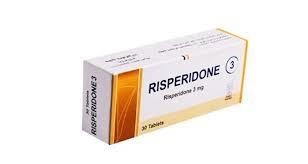A nurse is planning educational materials for a client who has a new pacemaker.
Which of the following information should the nurse include?
"Keep mobile phones 4 inches from the pacemaker generator.”
"Limit strenuous physical activity for 8 weeks.”
"Check your pulse rate for 30 seconds at different times throughout the day.”
"Expect to have intermittent, prolonged hiccups.”
The Correct Answer is A
Choice A rationale:
The nurse should include the information about keeping mobile phones at least 4 inches away from the pacemaker generator in the educational materials for the client. This is because mobile phones emit electromagnetic signals that could interfere with the functioning of the pacemaker. Maintaining a safe distance helps prevent electromagnetic interference, ensuring the pacemaker functions properly without any disruptions. It's crucial for the client to be aware of this to prevent potential complications and ensure the pacemaker's effectiveness.
Choice B rationale:
Limiting strenuous physical activity for 8 weeks is not a necessary precaution for a client with a new pacemaker unless specifically advised by the healthcare provider. Patients with pacemakers are often encouraged to resume normal activities after the procedure, with the understanding that they should listen to their bodies and avoid activities that cause discomfort or strain. There is no standard guideline suggesting an 8-week restriction on strenuous physical activity for all patients with new pacemakers.
Choice C rationale:
Checking the pulse rate for 30 seconds at different times throughout the day is a general health practice and not specifically related to the presence of a pacemaker. While monitoring heart rate is essential for overall health, it is not a pacemaker-specific guideline that must be included in the educational materials for a client with a new pacemaker.
Choice D rationale:
Expecting to have intermittent, prolonged hiccups is not relevant information for a client with a new pacemaker. Hiccups are a common physiological phenomenon and are not influenced by the presence of a pacemaker. Including this information in the educational materials would be irrelevant and potentially confusing for the client.
Nursing Test Bank
Naxlex Comprehensive Predictor Exams
Related Questions
Correct Answer is B
Explanation
- A is incorrect because massaging bony prominences on the client's left side can increase the risk of skin breakdown and pressure ulcers. The nurse should avoid applying pressure to areas with impaired circulation or sensation.
- B is correct because supporting the client's left arm on a pillow while sitting can prevent edema, contractures, and nerve damage. The nurse should also encourage the client to perform active and passive range of motion exercises on their left arm.
- C is incorrect because positioning the bedside table on the client's left side can discourage the client from using their right side, which can lead to neglect and learned nonuse. The nurse should position the bedside table on the client's right side and encourage them to reach for items with their right hand.
- D is incorrect because placing the client's cane on their left side while ambulating can cause instability and falls. The nurse should place the cane on the client's right side and instruct them to move their left leg and cane together, followed by their right leg.
Correct Answer is A
Explanation
Implement fall precautions for the client.
- A. Implement fall precautions for the client. This is correct because risperidone can cause orthostatic hypotension, which can increase the risk of falls and injuries. The nurse should advise the client to change positions slowly, avoid alcohol and dehydration, and use assistive devices as needed.
- B. Monitor the client's thyroid function. This is incorrect because risperidone does not affect thyroid function. The nurse should monitor the client's thyroid function if they are taking lithium, which can cause hypothyroidism.
- C. Place the client on a fluid restriction. This is incorrect because risperidone does not cause fluid retention or overload. The nurse should encourage adequate fluid intake and monitor the client's fluid balance.
- D. Discontinue the medication if hallucinations occur. This is incorrect because hallucinations are a symptom of schizophrenia, not a side effect of risperidone. The nurse should not discontinue the medication abruptly, as this can cause withdrawal symptoms and relapse of psychosis. The nurse should assess the client's response to the medication, report any adverse effects, and adjust the dosage as prescribed.

Whether you are a student looking to ace your exams or a practicing nurse seeking to enhance your expertise , our nursing education contents will empower you with the confidence and competence to make a difference in the lives of patients and become a respected leader in the healthcare field.
Visit Naxlex, invest in your future and unlock endless possibilities with our unparalleled nursing education contents today
Report Wrong Answer on the Current Question
Do you disagree with the answer? If yes, what is your expected answer? Explain.
Kindly be descriptive with the issue you are facing.
